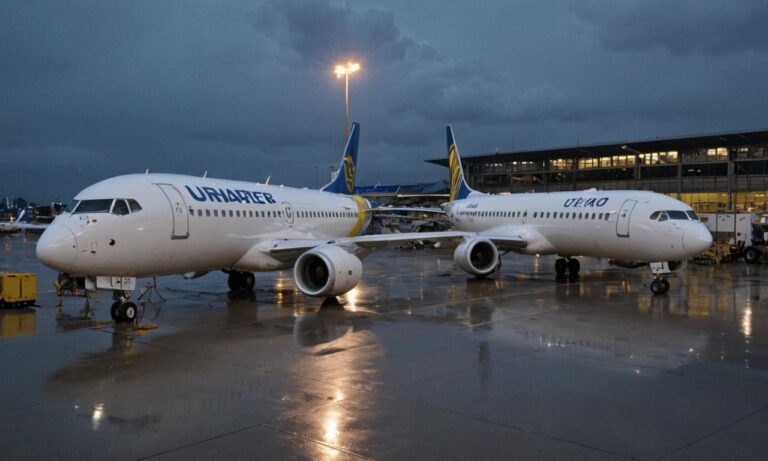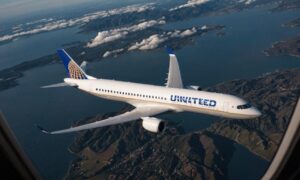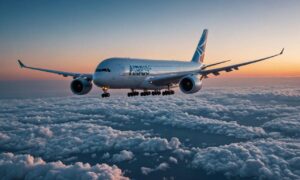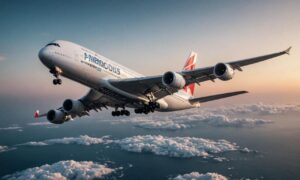When it comes to comparing aircraft, the Embraer 170 and the Boeing 737 stand out as notable contenders in the world of aviation. These two aircraft cater to different segments of the market, each with its own set of strengths and capabilities.
Embraer 170: The Regional Jet
The Embraer 170 is a regional jet manufactured by the Brazilian aerospace company Embraer. It is designed to operate on short to medium-haul routes, making it ideal for regional airlines and shorter-distance travel.
The aircraft typically seats around 70 to 80 passengers in a standard configuration, providing a comfortable and efficient means of transportation for smaller markets and routes with lower passenger demand.
With its sleek design and modern avionics, the Embraer 170 offers passengers a smooth and enjoyable flying experience. Its advanced technology and fuel-efficient engines contribute to its popularity among regional carriers around the world.
Boeing 737: The Workhorse of the Skies
On the other hand, the Boeing 737 is a mainstay in the commercial aviation industry and is widely regarded as the workhorse of the skies. It comes in various models, including the 737-700, 737-800, and 737-900, each offering different seating capacities and range capabilities.
The Boeing 737 is a versatile aircraft that can be configured to accommodate anywhere from 85 to over 200 passengers, depending on the variant and seating layout. It is commonly used for both short-haul and medium-haul flights, serving routes of varying lengths and passenger volumes.
Known for its reliability, efficiency, and robust design, the Boeing 737 has earned a reputation as one of the most successful commercial aircraft models in history. Its widespread use by airlines worldwide attests to its enduring popularity and performance.
Comparison
While both the Embraer 170 and the Boeing 737 serve important roles in the aviation industry, they differ in several key aspects.
| Aspect | Embraer 170 | Boeing 737 |
|---|---|---|
| Seating Capacity | 70-80 passengers | 85 to over 200 passengers |
| Range | Approximately 2,000 to 2,500 nautical miles | Dependent on variant, up to 3,595 nautical miles (737-900ER) |
| Operating Cost | Lower operating cost per flight hour | Higher operating cost per flight hour |
| Market Segment | Primarily serves regional routes | Flexible usage on short to medium-haul routes |
In conclusion, both the Embraer 170 and the Boeing 737 offer unique advantages and cater to different segments of the aviation market. While the Embraer 170 excels in regional operations with its efficiency and modern design, the Boeing 737 remains a stalwart in commercial aviation, offering versatility and reliability on a global scale.
el Efficiency and Environmental Impact
One crucial aspect to consider when comparing aircraft is their fuel efficiency and environmental impact. While both the Embraer 170 and the Boeing 737 strive for efficiency, there are notable differences in their environmental footprints and fuel consumption rates.
The Embraer 170, being a smaller regional jet, tends to have lower fuel consumption per flight hour compared to the larger Boeing 737. Its design and engine technology often contribute to reduced emissions and a smaller carbon footprint per passenger mile.
Conversely, the Boeing 737, despite its widespread use and advancements in engine technology, generally consumes more fuel per flight hour due to its larger size and higher passenger capacity. This increased fuel consumption translates to higher carbon emissions and environmental impact, especially on longer routes.
Furthermore, advancements in sustainable aviation fuel (SAF) usage are increasingly becoming a focal point for airlines and aircraft manufacturers. While both the Embraer 170 and the Boeing 737 can utilize SAF, the overall impact and feasibility may vary depending on the aircraft’s size, route structure, and operational requirements.
Passenger Comfort and Cabin Design
Another significant consideration for airlines and passengers is the level of comfort and cabin design offered by the aircraft. While both the Embraer 170 and the Boeing 737 prioritize passenger experience, there are distinctions in their cabin layouts and amenities.
The Embraer 170, with its smaller size and regional focus, often features a more intimate cabin layout designed to maximize passenger comfort during short to medium-haul flights. Airlines may offer spacious seating configurations and modern amenities to enhance the overall flying experience.
In contrast, the Boeing 737, given its larger capacity and versatility, offers a wider range of cabin configurations and amenities tailored to meet the diverse needs of passengers and airlines. From economy class to premium cabins, the Boeing 737 can accommodate various travel preferences and service offerings.
Additionally, considerations such as noise levels, cabin pressure, and in-flight entertainment options contribute to the overall passenger comfort experience. Airlines may prioritize these factors differently based on the target market and route profile, influencing the selection between the Embraer 170 and the Boeing 737 for specific operations.
Frequently Asked Questions
- 1. Are there significant differences in maintenance costs between the Embraer 170 and the Boeing 737?
- 2. How do the resale values of the Embraer 170 and the Boeing 737 compare in the aviation market?
- 3. What are the typical route profiles where the Embraer 170 outperforms the Boeing 737, and vice versa?
- 4. How do the cockpit technologies and avionics systems differ between the Embraer 170 and the Boeing 737?






